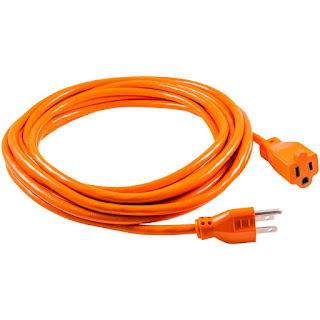Tips To Consider When Choosing An Extension Cord
The strength, material, and purpose of the cord jacket are designated by totally different letters. You may usually see a mix of these letters printed on the jacket itself. Here are the most common letters associated with household and outdoor extension cords such as extension cord for electric lawn mower:
We tend to like extension cords that have a see-through outlet and embrace a tiny LED light-weight to let you recognize when the wire is plugged in and powered. The state of affairs could not come back up typically, but if your twine is plugged in around a corner or out of sight, it’s nice to understand at a look when the facility is on and when it isn’t. Some cords, like our previous pick from Voltec conjointly include locking brackets to stay a plugged-in tool’s power twine firmly hooked up to the extension cord’s outlet. It’s a pleasant-to-have feature, but we tend to didn’t consider it an essential one as a result of it will be replicated for just a few dollars with one in all the various third-party twine locks out there.
As a result of electrical tools and appliances have completely different power ratings, these rugged, weather-resistant transportable cords are designed to accommodate a variety of temporary power necessities. (Note that we tend to're not talking concerning extension cords for strictly lightweight-duty indoor use.) However not all extension cords are created equal. An improperly sized extension cord can cause a tool or appliance motor to burn out if allowed to run for too long. It can additionally cause a dangerous situation if it overheats.
[*fr1] a dozen different factors contribute to an extension wire’s electrical current bandwidth and range of use—gauge rating, power rating (in amps/volts/watts), twine length and voltage drop, jacket strength, plug and socket sort, and intended use. In addition, you may want to weigh peripheral concerns like aesthetic appeal and usefulness options (for example, lighted plug ends).
How abundant power a twine will carry is connected to how thick the wires are inside and the length of the twine. The longer an extension twine, the thicker the conductive copper wires inside need to be. (Wire gauges are often marked in AWG, where smaller numbers signify thicker wires.)
The socket is that the part of the extension twine into which you plug your appliances. This strip could contain multiple sockets (for two- or 3-prong plugs), permitting you to power up multiple appliances, provided you don’t reconsider the wattage (power rating) on the cord’s label. Note that a two-pronged plug may be inserted into a three-slotted socket, but never the reverse. Conjointly, invariably use an extension cord with three-pronged sockets with appliances that have three-pronged plug ends.
In addition to amperage and gauge, you ought to conjointly consider twine length when selecting the proper kind of extension twine. Longer cords produce a lot of electrical resistance and deliver less power to the connected device. It’s best to use a cord of the proper length to scale back power loss, particularly if you’re employing a device with a high amperage rating.
